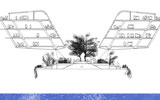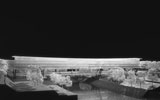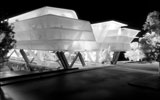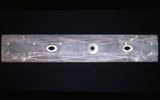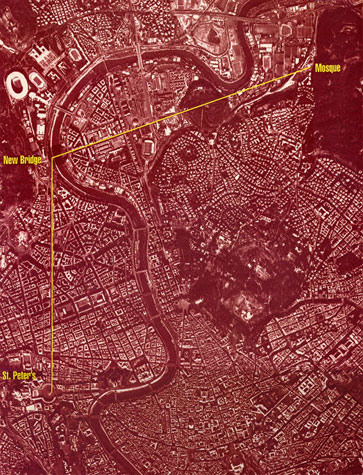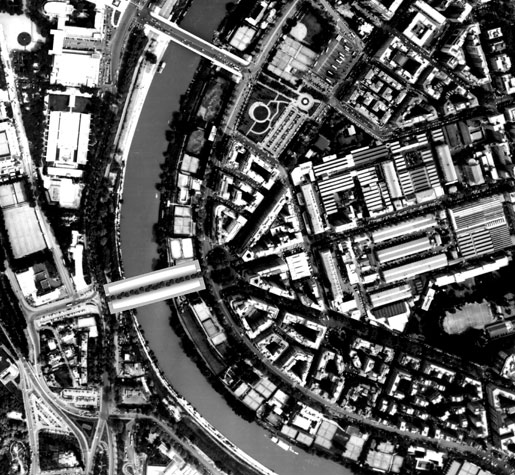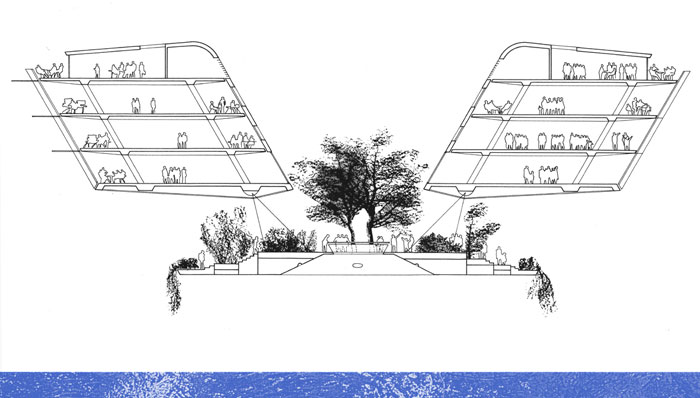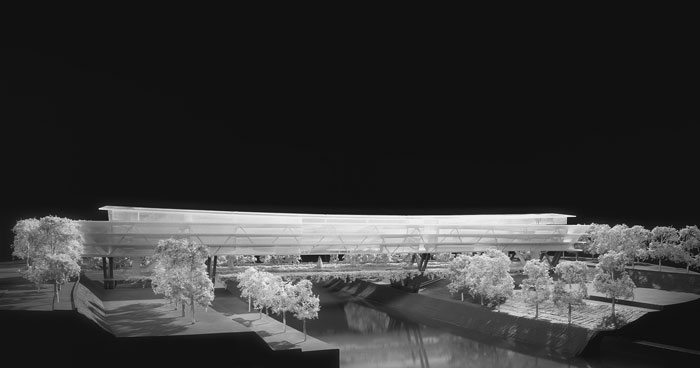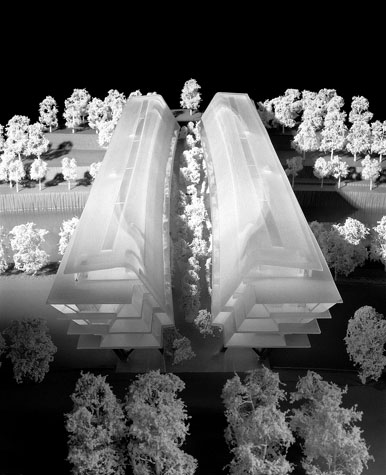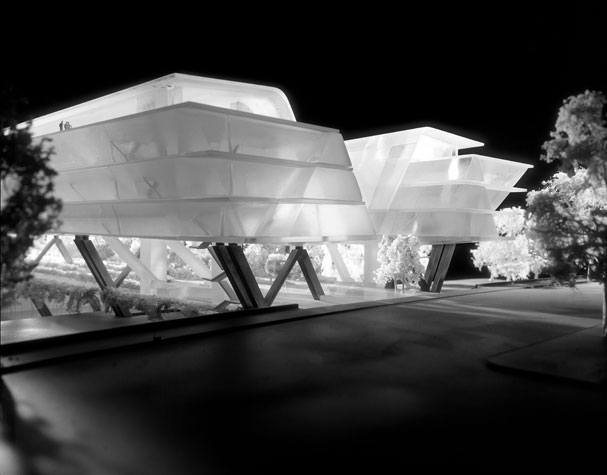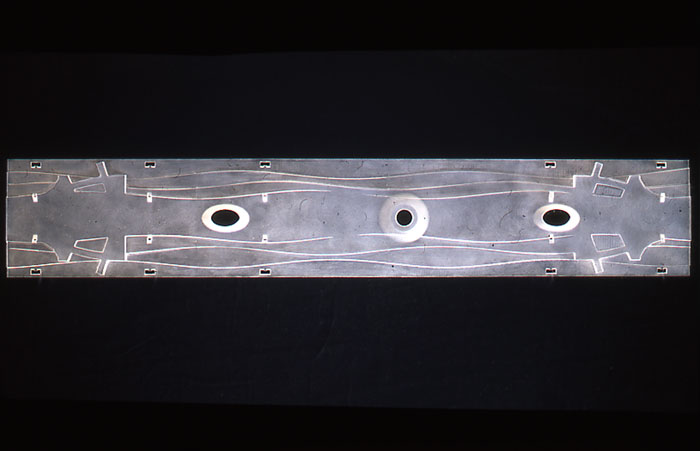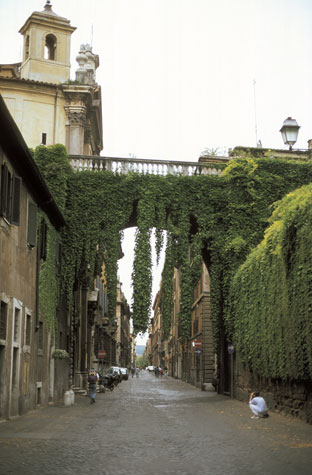INHABITED GARDEN BRIDGE BETWEEN CHRISTIANITY AND ISLAM FOR 21ST CENTURY
Piazza Gentile da Fabriano, Rome, Italy
The location of this bridge proposal from 1996 is symbolic. Its west flank is located on the axis of Viale Angelico and Via di Porta Angelica, which lead to Piazza San Pietro, linking the bridge with Vatican. Its east flank provides a focal point for three streets merging on Piazza Gentile da Fabriano. The axis of the bridge, aligned with Via Guido Reni, extends eastwards past Palazzeto dello Sport and reaches the Roman Mosque. The bridge links Vatican with the Mosque through an ephemeral axis. The complexity and dynamism of the inner workings of the two bridge buildings, offering a total of 30,000 m2 of art and shopping floor space, contrast with the smooth and flowing lines of their external appearance - a parallel with the outward coherence and the inner tensions of both Christianity and Islam. One of the buildings represents Islam the other Christianity. The garden deck, 215 meters long by 38 meters wide, suspended beneath them represents the concept of Eden or Paradise, which unites the two religions. The two buildings and the deck are intertwined in one structural system. The buildings would collapse outwards were the deck ( the Paradise ) to be removed. The first ‘inhabited’ bridges appeared in Europe in the Middle Ages. In Paris, following a king’s order of 1141, moneychangers set up their shops on the Grand Pont. In 1144 a bridge in Angiers was described as a ‘very busy street, where a shopper could find anything he needed for comfort and all the superfluous luxury made necessary’. Commerce played key role in the creation of early ‘inhabited’ bridges. The trade carried out along ‘inhabited’ bridges was subject to progressive refinement. Ponte Vecchio in Florence switched from butchers to leather tanners, and later to jewellers. One of the main ‘inhabited’ bridges in Paris had a prominent art gallery, which belonged to a dealer who represented Watteau. However, the most immediate and Roman influence for this project, created by CM Bednarski’s during his residence as Rome Scholar with the British School at Rome, was the garden bridge between Palazzo Farnese and Villa Farnesina ( crossing Via Julia ) proposed by Michelangelo Buonarroti in 1546.
The project was developed with Tim Macfarlane and costed by Davis Langdon Everest. A model of the bridge was specially commissioned for the 1996/97 Royal Academy of Arts Living Bridges Exhibition in London.


